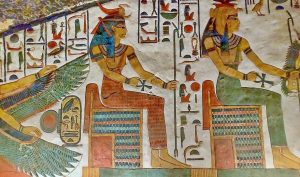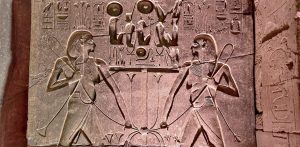The Ancient Egyptian Cartouche: Unlocking the Secrets of Ancient Identity
In the world of ancient Egypt, hieroglyphs served as a vital means of communication, recording history, and preserving cultural identity. Among the many fascinating aspects of Egyptian hieroglyphic script, the ancient Egyptian cartouche stands out as a distinct and intriguing feature. This article explores the significance and symbolism of the Egyptian cartouche, shedding light on its role in deciphering the identities of prominent figures from the ancient past.
Unraveling the Ancient Egyptian Cartouche:
A cartouche, in Egyptian hieroglyphs, is an oval shape that encloses a group of hieroglyphic symbols. It functions as a protective ring or border, signifying the sacredness of the name inscribed within it. The cartouche was originally used to enclose the names of pharaohs, kings, and queens, emphasizing their divine and eternal nature.
Symbolism and Purpose:
The cartouche carried profound symbolism in ancient Egyptian culture. Its oval shape was believed to represent a rope, symbolizing eternal protection and the binding of cosmic forces. The enclosed name within the cartouche was considered a person’s true essence, granting them immortality and ensuring their presence in the afterlife.
Ancient Egyptian Cartouche Decoding Identity:

The Egyptian cartouche played a significant role in deciphering the identities of important figures from the past. Egyptologists and archaeologists have relied on cartouches to identify and authenticate the names of pharaohs, queens, and other notable individuals mentioned in ancient inscriptions and historical records. These oval enclosures have been instrumental in piecing together the puzzle of Egypt’s rich history.
The Power of Names:
In ancient Egypt, names held immense power and significance. It was believed that knowing a person’s true name granted power over them. The cartouche, by enclosing the name of a ruler or deity, served as a protective barrier against potential harm or misuse of their identity. The cartouche ensured the preservation of their true name, guarding it from any ill-intentioned forces.
Evolution and Adaptation:
Over time, the usage of the cartouche expanded beyond the realm of royalty. It began to encompass the names of important nobles, high-ranking officials, and even deities. The cartouche became a symbol of prestige and authority, signifying the individual’s close connection to the divine realm.
Legacy and Cultural Significance:
The Egyptian cartouche, with its distinct shape and purpose, continues to captivate scholars, historians, and enthusiasts alike. It serves as a tangible link to Egypt’s ancient past, offering insights into the people who shaped the civilization. The cartouche’s influence can be seen in various forms of Egyptian art, such as temple inscriptions, tomb decorations, and royal regalia, underscoring its lasting impact on Egyptian culture.
The Egyptian cartouche stands as a unique and significant symbol in the world of ancient Egypt. Its oval shape, encasing the sacred names of pharaohs and other prominent figures, speaks to the belief in eternal protection and the power of names. Through the cartouche, we gain glimpses into the identities of rulers and individuals who shaped Egyptian history. As we continue to unlock the secrets of the past, the cartouche remains a testament to the enduring legacy of ancient Egypt and its rich cultural heritage.
Learn more about the Ancient Egyptian Cartouche






